How Do You Design a House for Miss Havisham? First, Peer Through the Cobwebs
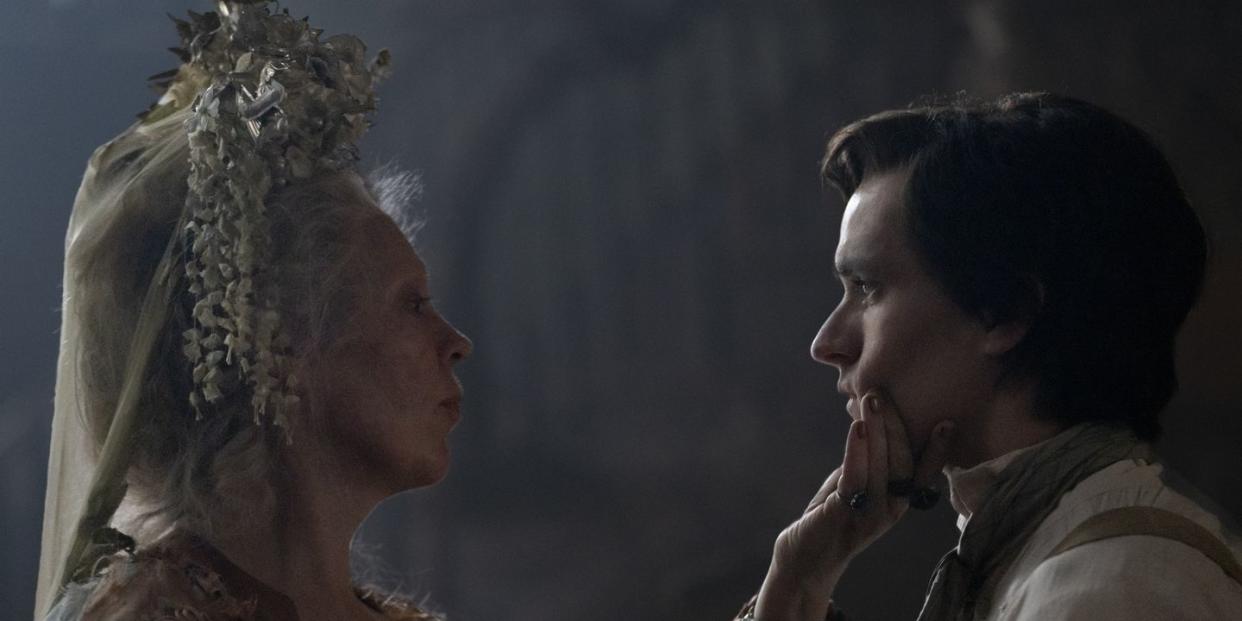
Above: Miss Havisham (Olivia Colman) with her young squire, Pip (Fionn Whitehead).
Of all the female characters in 19th-century literature, none remain quite as mystifying—or misunderstood—as Miss Havisham, the wedding dress–enshrouded, organizationally challenged spinster at the heart of Charles Dickens’s 1861 novel Great Expectations. In fact, for more than a century, filmmakers and TV producers have taken dozens of stabs at plumbing her psyche, from a shimmying Anne Bancroft (1998) to a shabby-chic Gillian Anderson (2011) to a goth-glam Helena Bonham Carter (2012). This spring, Academy Award–winning actor Olivia Colman takes up the fraying mantle of Miss Havisham in a new adaptation from FX in association with the BBC, a performance the Guardian has called “mesmerizingly sinister.” Equally mesmerizing is her home, a once-grand Georgian manor that, like the jilted Miss Havisham herself, has fallen into a state of decrepit collapse.
To create the series’ sets, the production team called upon the U.K.-based designer Sonja Klaus. “I always believed the house was a character,” insists Klaus, whose credits include Gladiator, Tomb Raider I and II, Kingdom of Heaven, and more. The challenge for this rendition, amid dozens of cobwebby forebears? “How can I do something that makes Miss Havisham different from all the other Havishams—without putting old bits of wood up in the window and manky curtains?”
According to Klaus, that starts with understanding who Miss Havisham is. “Great Expectations has been done many times,” the set designer concedes. “This is darker. This is more investigative.”
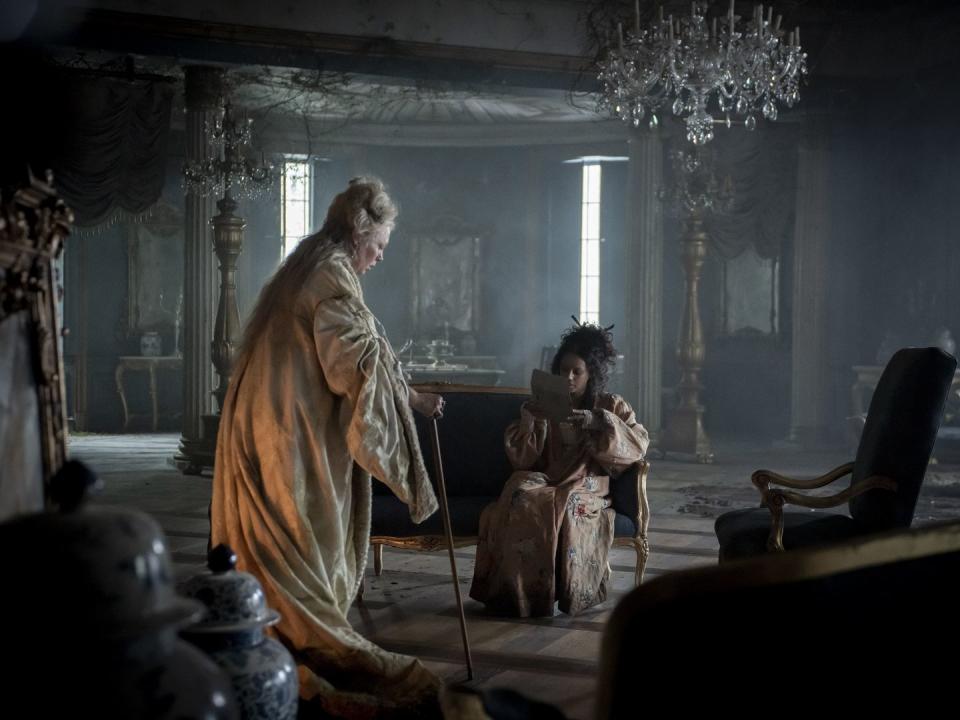
Dickens left some narrative threads for Klaus and her team to riff on creatively, namely, that Miss Havisham’s father was a wealthy brewer and that she was defrauded and jilted at the altar on her wedding day. Years later—still donning her tattered bridal finery—and watching as rodents peck away at her moldering wedding cake—Miss Havisham has been transformed (as Dickens describes rather unkindly) into “the witch of the place.”
“Can you imagine how hideous it must have been?” Klaus, the set designer, says of Miss Havisham’s wedding day disaster, especially in the context of upper-crust English society. “You have to link that with what’s going on in the house.”
The results are as psychological as they are cinematic. This Great Expectations was filmed both on location and on a soundstage. Based on her research, Klaus inferred that Miss Havisham’s estate would have been built between 1720 and 1740. Myles Place in Salisbury, England—a building that dates precisely to that period—fit the bill. Shirburn Castle—a fairytale Grade I–listed property in Oxfordshire—set the scene for the estate’s brewery and some of the grander interior shots.
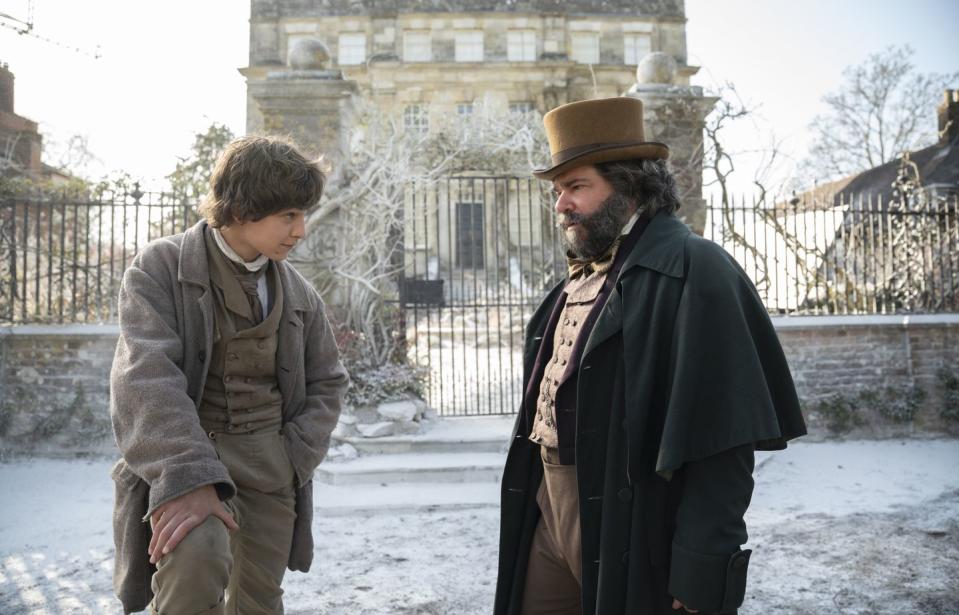
Miss Havisham’s chambers needed to look equally authentic. That meant that the wedding cake, however iconic or true to the text, had to go. (“I don’t think there would be anything left [after decades]!” Klaus says). The set design team instead took some creative license and spun a backstory: that Miss Havisham’s family had connections to the Dutch East India company and the opium trade. For inspiration, Klaus and set decorator Ellie Pash looked to Schloss Charlottenberg, a palace in Berlin that’s replete with lavish baroque flourishes, and wunderkammer-like rooms packed with blue-and-white Chinese porcelain. Similarly, Miss Havisham’s grand reception hall is filled with niches displaying the precious wares. “I think she had some flair; she had some artistry,” Klaus says of Miss Havisham’s rarefied tastes.
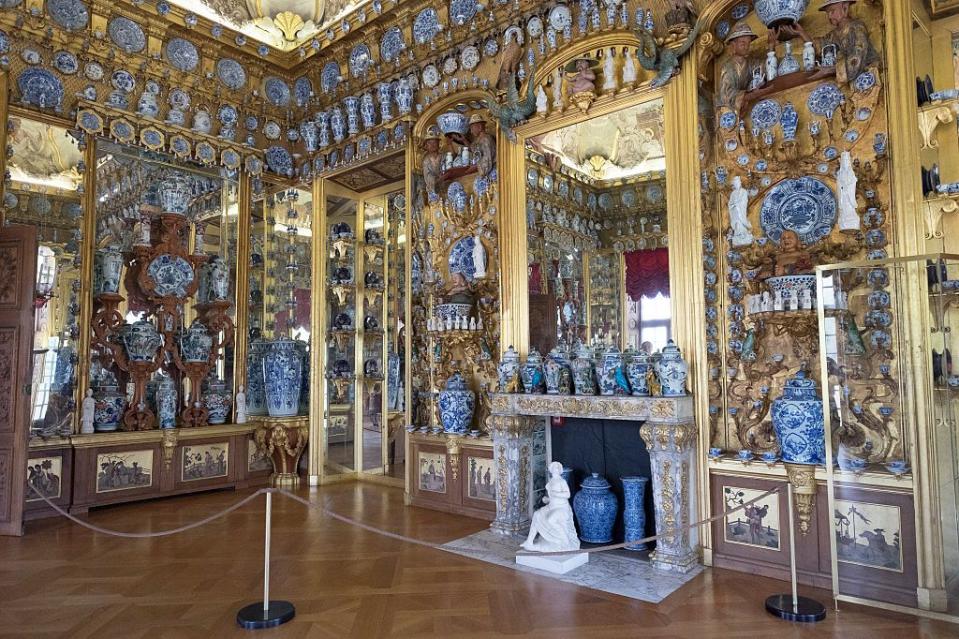
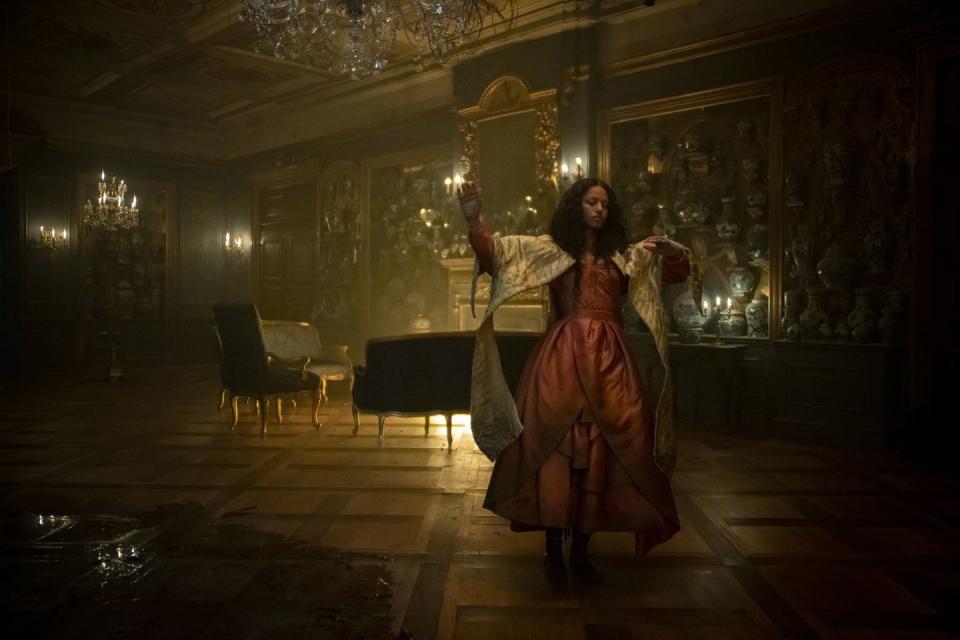
The East-meets-West theme continues in Miss Havisham’s bedroom (filmed at Shirburn Castle), where she lounges in a dressing gown, smoking opium and chewing a betel nut, a popular stimulant at the time. “It was quite a thing to go to an opium den and to lie on a bed and have a good old chuff,” Klaus explains.
For such a personal space, the production design team made sure it reflected a level of cosseted intimacy, from a gigantic custom-designed bed to elaborate floral wallcoverings, all hand-painted on canvas and then gingerly hung on the walls so as not to disturb the historic landmarked interiors. Klaus, in a subtle foreshadowing twist, relied on a color palette of burgundy, orange, black, and gold to evoke smoldering embers. “When you see her there [in her bedroom], you almost believe she could be a real person,” she says. “You might know that person.”
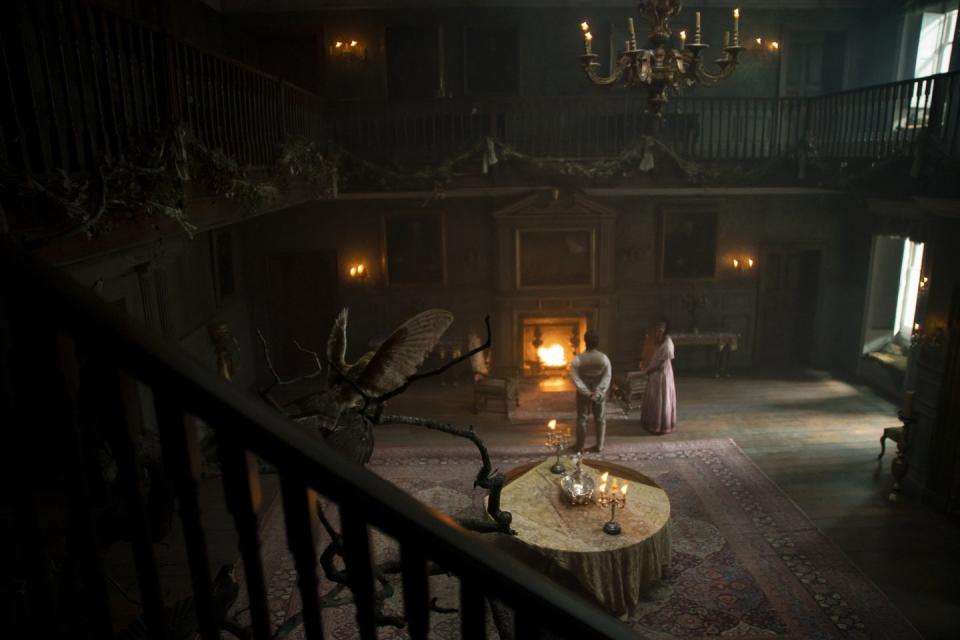
Other details were carefully sourced from prop houses and antique dealers all over the U.K., like a delicate set of scent bottles placed on a dresser. Dried-flower garlands—remnants of that ill-fated trip down the aisle—meanwhile, festoon the halls and the main entry. A replica of a Georgian shell grotto, carefully constructed by hand using leftover shells from restaurants, is tucked into a hallway corner. “If you’re touching the real thing, you get something from it,” Klaus explains. “It helps take the [actors] to the place they need to be.”
The result is haunting yet utterly transportative grandeur, a sensibility that reflects the tastes of the time while giving Miss Havisham her due. “When you design things, you don’t always know that it’s going to make it into the final cut, but I need to know it’s there because I feel that the design is the character and the design is the story,” Klaus reflects. “And you never know if you will catch it in a corner.”
You Might Also Like

